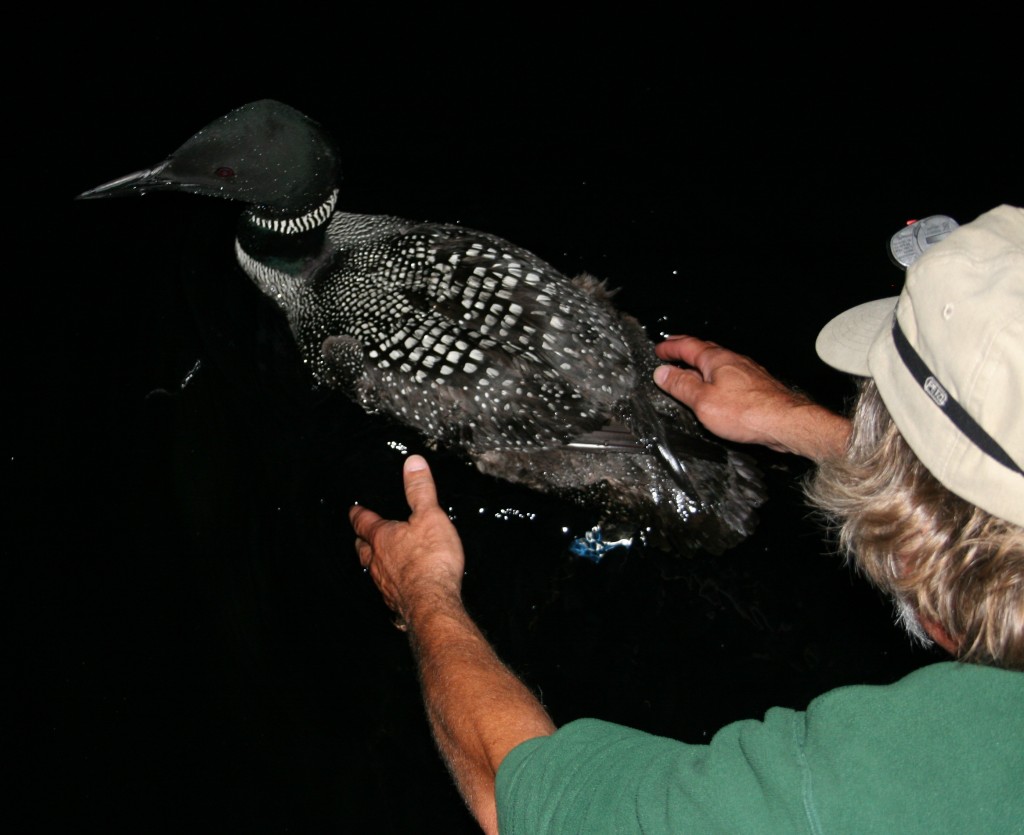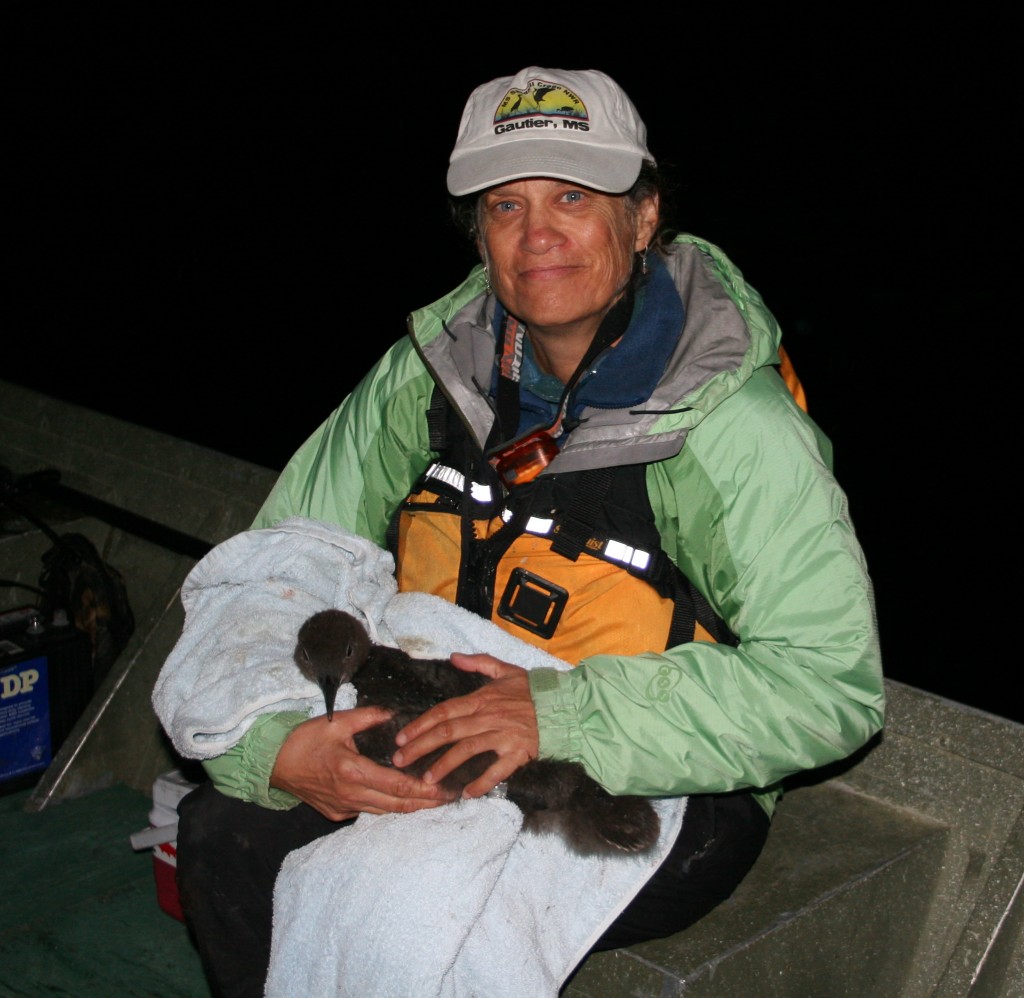Water habitats: Loon chicks true indicators of pollutants
A few people got some rain this week but it was very spotty. Just a few rain drops hit our windshield on our way to Old Forge Wednesday night (8/3) to band some Loons.
I saw a few along the street that night that could have been banded also. You just never know what you’re going to see in your travels.
I have seen so many unusual things that it doesn’t even phase me anymore.
The Moose at Helldiver Pond has been a no-show for most of this week. I didn’t see any tracks in the road so he must have found another pond full of lilies to eat from.
Karen and I took a trip to the Cedar River Flow last week which was abundant with vegetation.
Karen commented that the Moose could eat there all summer and still not make a dent in the plants that were growing there.
This is one of the prettiest places to take photographs. No matter which way you look you see water surrounded by mountains.
You can see the Fire Towers on Pillsbury and Wakely Mountains from the Flow.
The reeds that grow at the west end make for neat sunrise and sunset photos.
Every time I’ve been there this summer it has been picture perfect with white puffy clouds set in a deep blue sky. This makes for neat refraction shots.
We have been carrying a fly swatter in the canoe to fight off the biting Dog Flies. They are hard to kill but the swatter does the trick. These are the pests that bite your ankles.
They have a real sharp nip as their probe seems to be dull. They normally don’t come out until about this time of the year but they have been out for nearly a month now.
You may have seen our bright lights at night as we have been banding Loons for three nights now. We have three more nights to go further up north.
We’ve caught 17 birds so far. Some of the adults had been banded in previous years and others are new birds. All but one of the chicks has been big enough to hold a band. That one was on the inlet to Seventh Lake.
The adults there wouldn’t hold for the light so they escaped capture.
Some birds come right to the boat or canoe while others just splash-dive and disappear when the light goes by.
We did catch a loon that we banded as a juvenile. I have not seen its band number yet so I don’t know where it was born.
This bird only had a silver band on its left leg but no color bands.
I saw this bird come off a platform a couple years ago but this is the first year its chicks have hatched. We caught its mate and two six-week-old chicks there.
The mate was a feisty male who bit the side of the canoe when we took him out of the net. He didn’t want to let go.
When he finally let loose he latched onto the motor operator’s finger giving him a good nip.
I suppose if someone plucked me out of bed in the middle of the night I might bite and scratch as well.
Catching already-banded Loons is a good way to check and see if their Mercury levels have increased or decreased.
Testing is done by using some of their blood and feather samples from their wings, tails and those pretty back feathers.
A Loon changes pollutants in its blood about every thirty days, but the feathers contain a year’s worth of pollutants.
The chicks of course have only eaten food from the pond or lake that they are raised on.
On the other hand, the adults sometimes fly out and dine at other lakes.
So the chicks are true indicators of what pollutants are in the waters they inhabit.
It’s only been documented a couple of times that a Loon in-flight will carry a fish from an outside lake to its home lake. This occurred in acid lakes that did not contain any fish.
The adults would go out and fish in other places so as not to take food from the lakes where their chicks were.
In places such as Little Indian Lake in the Plains, they feed their chicks aquatic bugs, crayfish, newts and pollywogs.
It takes a chick about two weeks longer to take flight from these lakes as they grow much slower.
We have caught some big male Loons this year.
They are a lap-full to handle. Most handlers have taken our advice and wear a pair of old rain pants as these birds usually poop once or twice while being held.
These samples are also collected so nothing is lost in the process.
DNA samples are taken from each bird which will eventually connect one bird to another. We also scan unbanded adult birds.
For a few years now we have put chips in juveniles that were too small to band.
We haven’t found a chip yet but I’m sure we will soon.
A few more Loons in-hand, but that’s another story. See ya,



